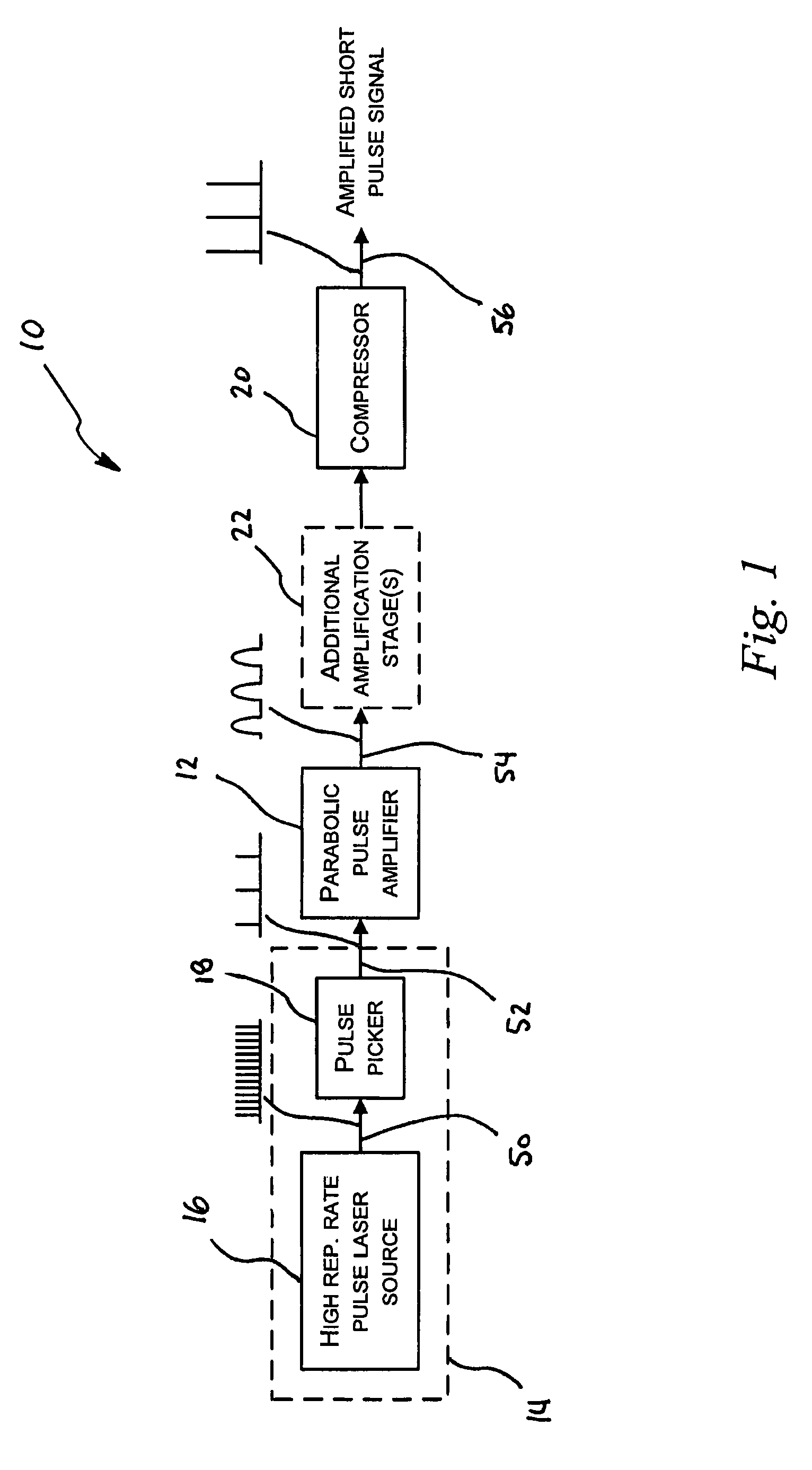Low-average-power parabolic pulse amplification
a parabolic pulse and low-average-power technology, applied in the field of optical amplifiers, can solve problems such as unbalanced gain and improper conditions for parabolic pulse amplification
- Summary
- Abstract
- Description
- Claims
- Application Information
AI Technical Summary
Benefits of technology
Problems solved by technology
Method used
Image
Examples
Embodiment Construction
[0022]Referring now to the drawings, FIG. 1 shows a low-repetition-frequency short-pulse light source system 10 incorporating a parabolic pulse amplifier 12. The system 10 is used to produce a low-Pulse-Repetition-Frequency (PRF) femtosecond pulse light signal having a wavelength of 1064 nm, from a high-PRF pulse laser source 16. The system 10 comprises a low-PRF pulse light source 14 which is amplified using a parabolic pulse amplifier 12. In this example, the low-PRF pulse light source 14 is provided by cascading a high-PRF pulse light source 16 and a pulse picker 18 for selecting a fraction of the pulses produced by the high-PRF pulse light source 16 in order to reduce the PRF.
[0023]In this case, the high-PRF pulse laser source 16 is a commercially available mode-locked fibre laser manufactured by Calmar Optcom™. Femtosecond fibre laser oscillators usually produce a high-PRF pulse signal 50 having a PRF of the order of 5 to 100 MHz. For many applications, a PRF below 5 MHz, and t...
PUM
 Login to View More
Login to View More Abstract
Description
Claims
Application Information
 Login to View More
Login to View More - R&D
- Intellectual Property
- Life Sciences
- Materials
- Tech Scout
- Unparalleled Data Quality
- Higher Quality Content
- 60% Fewer Hallucinations
Browse by: Latest US Patents, China's latest patents, Technical Efficacy Thesaurus, Application Domain, Technology Topic, Popular Technical Reports.
© 2025 PatSnap. All rights reserved.Legal|Privacy policy|Modern Slavery Act Transparency Statement|Sitemap|About US| Contact US: help@patsnap.com



